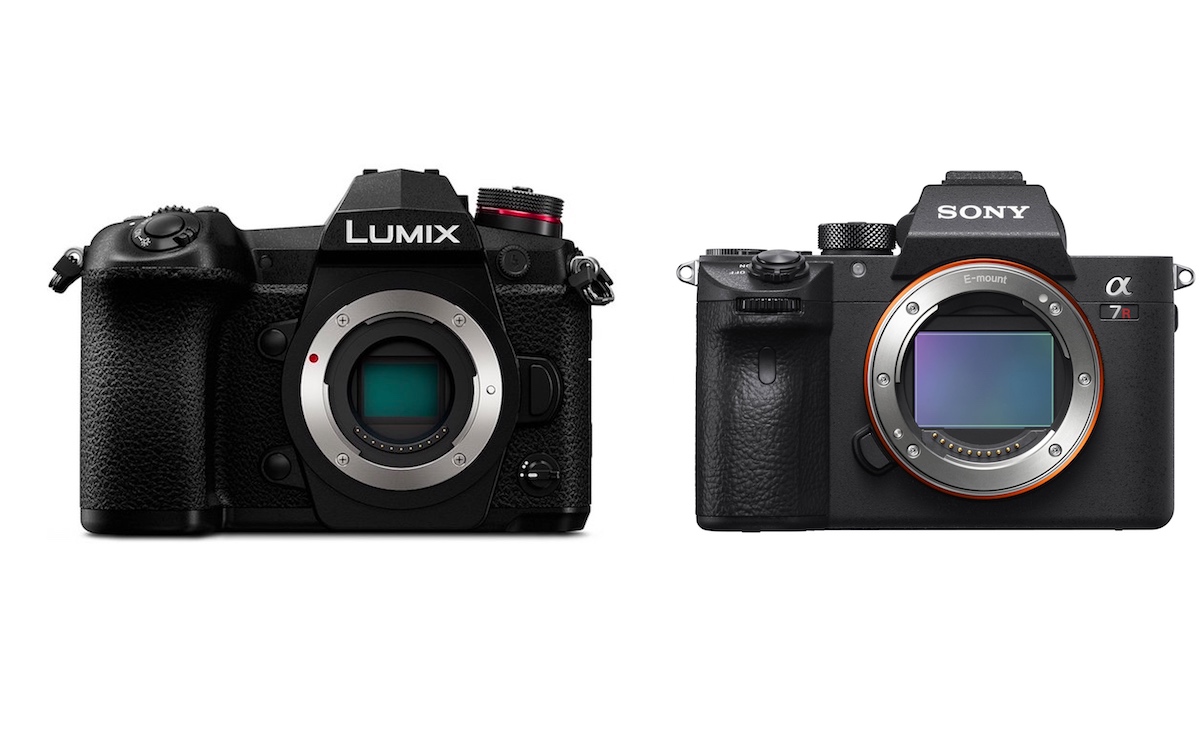Let’s compare the Panasonic G9 vs Sony A7R III. Our comparison table below covers all the important specifications of each camera. We specifically talk about the new improvements, advantages and which model is better suited for your needs.
Panasonic G9 and Sony A7R III has the different sensor size and resolution in camera world. The Panasonic has a resolution of 20.2 megapixel Four Thirds, whereas the Sony provides 42.2 MP full-frame sensor. Neither of the two cameras has an anti-alias filter installed. The sensor in the G9 has a native 4:3 aspect ratio, while the one in the A7R III offers a 3:2 aspect.
When it comes to video features, the G9 provides a higher frame rate than the A7R III. It can shoot video footage at 4K/60p, while the Sony is limited to 4K/30p
Both the G9 and the A7R III are mirrorless interchangeable lens cameras that were officially announced in late 2017. The price of Panasonic G9 is almost $1500 cheaper than the Olympus E-M1 Mark II. The G9 costs $1,699 while the A7r Mark III is currently seeling for $3,198.
Differences Between the Panasonic G9 vs Sony A7R III Cameras
The Panasonic G9 vs Sony A7R III comparison covers all the important specifications of each camera. Some differences like sensor, image size, shooting speed, lcd size etc.. detailed as bold on the table.
| Features / Models | Panasonic G9 | Sony A7R Mark III |
|---|---|---|
| Megapixel | 20 megapixels | 42.3 megapixels |
| Sensor size / type | Four Thirds (17.4 x 13 mm) | CMOS, 36 x 24 mm |
| Image processor | Venus Engine | BIONZX |
| Low pass filter | No Anti-aliasing | No Anti-aliasing |
| Image stabilization | 6.5 stops | 5-Axis sensor shift – 5.5 stops |
| AF System | DfD (Depth from Defocus) system | Contrast + Phase Detect sensor |
| AF points | 225 points | 399 points |
| ISO | 100-25600 | 100-32,000 |
| Shutter Min/Max | 60sec 1/32000 sec | 1/8000 to 30 sec |
| Top Continuous Shooting Speed | 60fps | 10fps |
| Video | 4K Ultra HD up to 60fps and 150Mbps, In 1080p, the maximum frame rate is 180fps. | 4K (3840 x 2160) at 30p |
| Display | 3.0″ TFT- LCD Rear Screen, Fully Articulated (1037K pixels) | 3″ Rear Articulated TFT-LCD |
| Viewfinder | Electronic Viewfinder (100%) 3,680k dots | Electronic Viewfinder (100%) 3,680k dots |
| Hot-shoe | Yes | Yes |
| Battery Life (CIPA) | 400 shots | 650 shots |
| Wireless connectivity | Built-in | Built-in |
| Dimensions | 137 x 97 x 92mm | 127 x 96 x 74 mm |
| Weight | 658 gram | 657 gram |
So what conclusions can be drawn? Is the Sony A7R III better than the Panasonic G9 or vice versa? A detailed information of their advantages are listed below.
Panasonic Lumix DC-G9 Advantages :
- Better video: Provides higher movie framerates (4K/60p vs 4K/30p).
- Easier setting verification: Has an LCD display on top to control shooting parameters.
- More flexible LCD: Has swivel screen for odd-angle shots in portrait or landscape orientation.
- Faster burst: Shoots at higher frequency (20 vs 10 flaps/sec) to capture the decisive moment.
- More affordable: Was introduced into a lower priced category (47 percent cheaper at launch).
Sony Alpha A7R III Advantages :
- More detail: Has more megapixels (42.2 vs 20.2MP), which boosts linear resolution by 48%.
- Better low-light imaging: Features bigger pixels on a larger sensor for better high-ISO images.
- More detailed LCD: Has a higher resolution rear screen (1440k vs 1040k dots).
- Longer lasting: Gets more shots (650 versus 400) out of a single battery charge.

